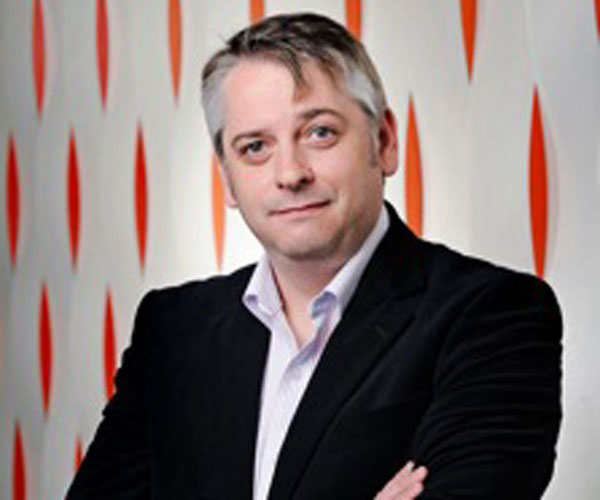Broadcast News
02/05/2017
Virtual Applications, The Cloud And IP Dominate The Playout Picture

Virtual machine level: George Jarrett talks to a service company and two vendors about the trend driving the market away from SDI.
The abandonment of SDI is now a full pelt operation. Cloud infrastructure and virtualised applications lead the way in playout as time to market for new and pop up channels has been reduced from weeks to minutes.
With NAB about to happen, and everyone in the industry looking excitedly at the potential of SMPTE ST 2110, and at 5G as a hugely bigger enabler, we were lucky to find three people to discuss all the issues and ambitions that are certain to occupy user minds at the show. OTT, around which IP is amazingly strong, and the variants of VOD are sucking the lifeblood out of linear television, but there are more conservative issues at play too with IP, like context and articulating the business benefits.
Third parties as containers
In terms of IP, Ericsson CTO Steve Plunkett detects a crucial advance year on year. "Last year saw people experimenting as much as doing things for real – getting hold of virtualised versions of products they would have previously bought a box for, and trying to understand how virtualisation works in the real world.
"They measured performance and resilience, and simulated network conditions. The technology stack is already moving quickly, and IP and virtualisation are the two key themes."
In 2016 people wanted to do the interoperability testing, based on SMPTE 2022-6 and wrapping (encapsulating) the entire SDI payload in IP packets. Not now though.
"There is a lot more work now around having audio, video and data separated out as elements and losing the SDI component completely, and SMPTE ST 2110 is the standards group the industry is coalescing around," said Plunkett. "IP in the labs and in early deployments will be a different flavour now, and the virtualisation side has also moved up.
"It was, 'Can I take a virtual machine and put it onto my own physical infrastructure?' A lot of people including ourselves spent a lot of time understanding that, but what we would really like to be able to do is receive the same products with third parties as containers."
These give a bit more flexibility, and it makes it easier to deploy the same system in both public and private cloud environments.
"Virtual machines we see as less flexible and carrying greater overheads than a container. Containers are still virtualisation, but not at virtual machine level," said Plunkett. "Because we want to quickly move on from SDI over IP to SMPTE 2110 we have to re-do a lot of the interoperability."
There are situations for which 2022-6 remains viable but the industry is desperate for SMPTE 2110 to be released. "Interop is critical for everyone getting to the place we want to be. With 2110, because it is much more decentralised, timing, discovery, registration and transport are all separate and can be deployed in more varying forms," said Plunkett. "The standards have some way to go, and revisions are in plan, but the fact is it is quite a different architecture and we will be able to do different things."
New protocols will need playing with, and standardisation has to be kept open because the market has not identified every permutation of use. What shape should a cloud-based distribution operation take?
"We want to be able to use distributed and remote architectures," explained Plunkett. "There are operational efficiencies to be gained through scale, by having more and more channels monitored by less people in a common facility.
"You get greater density through centralisation but the flip side is that there are situations where we want to centralise the infrastructure but we want people to be closer to the action, closer to editorial teams, closer to the studios," he added. "What we want is flexibility – the ability to have people in locations who can remotely control central infrastructure. In other situations we might like the intelligence and the infrastructure to sit right at the edge of the network, so we can change and substitute advertising for example.
5G will be a really important additional tool
Flexibility is more important than centralised or de-centralised. On the issues of what a service provider has to offer a client base, Plunkett said: "It is fundamental that you can demonstrate your focus on security, that you are able to logically separate content and data that is generated through the use of platforms across the customer base.
"You combine encryption, access control, authentication mechanisms, auditing and logging," he added. "There is a lot of us out there trying to achieve this, and the problem is not so different from a bank or health organisation in terms of separating customer data. In the media industry, people who are serving more than one client need to think of multi-tenanting and security very seriously. It has to be designed into the very foundation of what you build and is not something you can buy in and add at the end of a process."
The mass of interest in virtualisation suggests a change in attitude to the cloud.
"The security of the cloud is now often seen as the premier level of trust because there are so many control mechanisms made available to you," said Plunkett. "Very granular controls mean that the perception of cloud security has flipped. People see cloud security as the blue standard and wonder how they can get the same level of security controls everywhere in their set-up.
"The resilience of the cloud and the availability of content is something you assess and design for differently than securing access to the content itself," he added. "The role IP plays from the camera to the viewing device will expand over the next two years, and things like SMPTE 2110 are all part of that. More generally, if you think of distribution to an audience 5G will be a really important additional tool.
"I think we will see a gradual shift towards IP from satellite, not necessarily in consumer delivery, but in getting stuff around a location or a region. More of that will be IP over fibre. IP will be more pervasive but not dominating everything else.
Continuing on the topic of 5G, Plunkett commented: "It will change how we think. It will deliver increased bandwidth for different mechanisms and one is spectrum use. It will massively expand the frequency ranges that people will be able to use. It is designed to take advantage of many different frequency bands, that's why it is such a transformational thing
Ready to jump into the cloud
The modernisation of production, playout and distribution facilities will be Imagine's big theme at NAB. Summarising where we are now, Imagine VP of Strategic Solution Management, Glodina Lostanien, said: "The reality we are seeing and acknowledging is that there are different paces. Some companies are ready to jump all the way into cloud and virtualisation and others, for various reasons, have to take a more gradual approach."
Imagine will have big news involving Disney at NAB, and Lostanien confirmed that it had been involved in several true cloud playout operations opening up recently, mainly in the Middle East. Why is there a slow lane?
"The big factor is the unknown, the fear of moving to something new, but the comfort level is increasing. The other thing is, how do you make it work from the business standpoint," she said. "You are not afraid of going all IP but what do you do with your legacy infrastructure, and what is the initial cost to put in an IP replacement, and run it?"
The truth is that users are best advised to invest a little more up front. "Over time you will catch up because you will be able to leverage the business advantages of IP in terms of flexibility on the channels you run," said Lostanien. "Trying new things for a while and winding them down if they don't work, or expand them or upscale them further if they do work: these are the two things we are proposing to our customer base because we have seen it work in different places."
The rush into an OPEX world might see Imagine competing more with the service companies.
"If you believe that all these specialised functions are moving to a virtualised world, that becomes software as a service and then yes you think you are close to managed services. The question is what do you do? Are you yourself a management provider, or are you competing with some of your own customers, and they themselves may be competing against your customers. We are in a hybrid world," she added. "Our goal, our DNA is still to be providing the technology. The managed service approach requires a different skill set, and those service providers are partners and customers of ours."
Getting into hyper localisation
Imagine has been involved in the first mobile IP truck, which is totally UHD capable, and Lostanien sees something big on the playout front with ATSC 3.0.
"The traditional broadcasters now have access to a bigger pipe for data and this will allow them to completely rethink their whole model, and how much they can target both advertising and content at a hyper local level," she said. "We are really getting into the hyper localisation at a very small market level, and at NAB we will explain further what we are doing there."
OTT is a big earnings medium. "We can definitely see that the spend on OTT and on multi-platform approaches is increasing at the expense of the traditional linear infrastructure. But at the same time this is where the main income comes from still," commented Lostanien. "But that is for the most part. Anticipating that eyeballs are moving away, and looking at the way advertising effectiveness is being measured, things are going to change over this year.
"The model we are still tied to is biased towards linear, but the broadcasters are starting to understand that they have got to have a comprehensive approach to their ad revenue."
This involves mixing the linear and the multi-platform cultures, and Imagine has clever solutions that tie the two together. The integration of its Versio and xGSchedule will be a big Imagine story at NAB, because added will be the distribution element (OTT).
"We are going to be able to show from monetisation to distribution how you can run everything truly integrated," said Lostanien. "This is also being used with what we are doing with ATSC 3.0, and how to monetise that opportunity. Unifying, scheduling, playout and distribution will have a dedicated space on our booth."
With editing software rentable in the cloud, and software now dominating through apps and solutions, and interfaces, how does a 'traditional vender' (as was) sustain their mojo?
"The key for suppliers like Avid and ourselves is to say what our ultimate value is. What else can we offer that is seen as added value. It is how you move the technology value away from the actual function, and further up to the user experience. This is where the innovation will come from, and we are working very hard on that," said Lostanien
Taking away superfluous data
The rush into IP and virtualisation has encouraged Snell Advanced Media (SAM) to launch Morpheus UX.
"When you start to virtualise stuff you need a good way to access the system from a user perspective, so because Morpheus UK is a web-based interface it allows you to completely remote systems. You can dial in from anywhere from a PC, tablet and even a smart phone to control the system," said Karl Mehring, Director of Playout and Delivery, SAM.
The other element acknowledges that the cloud is getting more and more complex. "It is not getting simpler, and everybody has differing requirements," said Mehring. "One of the things we have found is if you just present the user with a fixed configuration UI – which ours was up to now – it is no good. Users now benefit from some of the efficiencies you can get from focusing on what the core business is."
This is not about cutting down; "It is a matter of taking away the complex amount of superfluous information that you do not need in a playout position – just minimising it to the bare essentials for the payload," explained Mehring. "For instance, if you are doing live playout you want to know when the next live event is, or the next five live events; you want the exact manual intervention, and it might be a hold or an insert graphics button. So in tailoring the Morpheus UX you can just achieve that highly focused set of functionalities, and increase the number of channels that one operator can deal with at any one time."
Does the customer base understand virtualisation and its overheads?
"That's an interesting question. Some companies who have a strong IT background within their facility perhaps do understand virtualisation, but at the same time their specialists may not understand the intricacies of real-time playout. They are used to providing highly reliable systems that can look and give you all the data, but not necessarily in real-time streams," said Mehring. "The virtualisation layer is just that, it is another layer that is put in between the physical power and the systems that access it.
"In places where people do understand virtualisation, they know what the flexibility can give them – the short time to launch for new services, and the ability to take stuff back down again," he added. "It is a try fast and fail fast kind of mentality."
Thus it is that launch times might be taken down to under five minutes. "But what about the upfront planning for ad sales and the programming? All of those processes for broadcasters are the things that take time. By collapsing down and virtualising, and making pop up channels possible, we are taking one of the pieces out but there are other pieces that need to be planned over weeks and maybe months," said Mehring. "The only exception to this is fixed programming for things like the Olympics."
This would put SAM's new production panel capabilities into a heavy master control type environment. Are broadcasters abandoning their walled gardens?
"In the main they are aware that they have to, but one of the problems is generating more revenue because you are doing more stuff for the same amount of return," said Mehring. "We try and increase efficiencies by allowing you to create kind of on-demand assets from the playout system. We can do a record and we can also playout live TV for fast turn round on-demand. We interface with OTT systems."
Pulling the right triggers
There are also insert triggers (into media) that give the down stream option of viewing on tablets and other devices. "Eventually the revenues will follow because the channel (the media) will be getting to a wider market in the future. How does SAM cater for the demand for data analytics?
"This is where our insertion of triggers comes in; we don't provide any media software per se. The thing is that the personalisation aspects that are being driven by the analytics are all happening at the edge," said Mehring.
The whole industry is betting on SMPTE 2110 pushing them further along the IP road. "We are hanging our washing on that line as well. It is what we do in the broadcast industry: we don't make our lives any easier by introducing a standard, but 2110 will give us different flexibility options," said Mehring.
Image: Steve Plunkett
The abandonment of SDI is now a full pelt operation. Cloud infrastructure and virtualised applications lead the way in playout as time to market for new and pop up channels has been reduced from weeks to minutes.
With NAB about to happen, and everyone in the industry looking excitedly at the potential of SMPTE ST 2110, and at 5G as a hugely bigger enabler, we were lucky to find three people to discuss all the issues and ambitions that are certain to occupy user minds at the show. OTT, around which IP is amazingly strong, and the variants of VOD are sucking the lifeblood out of linear television, but there are more conservative issues at play too with IP, like context and articulating the business benefits.
Third parties as containers
In terms of IP, Ericsson CTO Steve Plunkett detects a crucial advance year on year. "Last year saw people experimenting as much as doing things for real – getting hold of virtualised versions of products they would have previously bought a box for, and trying to understand how virtualisation works in the real world.
"They measured performance and resilience, and simulated network conditions. The technology stack is already moving quickly, and IP and virtualisation are the two key themes."
In 2016 people wanted to do the interoperability testing, based on SMPTE 2022-6 and wrapping (encapsulating) the entire SDI payload in IP packets. Not now though.
"There is a lot more work now around having audio, video and data separated out as elements and losing the SDI component completely, and SMPTE ST 2110 is the standards group the industry is coalescing around," said Plunkett. "IP in the labs and in early deployments will be a different flavour now, and the virtualisation side has also moved up.
"It was, 'Can I take a virtual machine and put it onto my own physical infrastructure?' A lot of people including ourselves spent a lot of time understanding that, but what we would really like to be able to do is receive the same products with third parties as containers."
These give a bit more flexibility, and it makes it easier to deploy the same system in both public and private cloud environments.
"Virtual machines we see as less flexible and carrying greater overheads than a container. Containers are still virtualisation, but not at virtual machine level," said Plunkett. "Because we want to quickly move on from SDI over IP to SMPTE 2110 we have to re-do a lot of the interoperability."
There are situations for which 2022-6 remains viable but the industry is desperate for SMPTE 2110 to be released. "Interop is critical for everyone getting to the place we want to be. With 2110, because it is much more decentralised, timing, discovery, registration and transport are all separate and can be deployed in more varying forms," said Plunkett. "The standards have some way to go, and revisions are in plan, but the fact is it is quite a different architecture and we will be able to do different things."
New protocols will need playing with, and standardisation has to be kept open because the market has not identified every permutation of use. What shape should a cloud-based distribution operation take?
"We want to be able to use distributed and remote architectures," explained Plunkett. "There are operational efficiencies to be gained through scale, by having more and more channels monitored by less people in a common facility.
"You get greater density through centralisation but the flip side is that there are situations where we want to centralise the infrastructure but we want people to be closer to the action, closer to editorial teams, closer to the studios," he added. "What we want is flexibility – the ability to have people in locations who can remotely control central infrastructure. In other situations we might like the intelligence and the infrastructure to sit right at the edge of the network, so we can change and substitute advertising for example.
5G will be a really important additional tool
Flexibility is more important than centralised or de-centralised. On the issues of what a service provider has to offer a client base, Plunkett said: "It is fundamental that you can demonstrate your focus on security, that you are able to logically separate content and data that is generated through the use of platforms across the customer base.
"You combine encryption, access control, authentication mechanisms, auditing and logging," he added. "There is a lot of us out there trying to achieve this, and the problem is not so different from a bank or health organisation in terms of separating customer data. In the media industry, people who are serving more than one client need to think of multi-tenanting and security very seriously. It has to be designed into the very foundation of what you build and is not something you can buy in and add at the end of a process."
The mass of interest in virtualisation suggests a change in attitude to the cloud.
"The security of the cloud is now often seen as the premier level of trust because there are so many control mechanisms made available to you," said Plunkett. "Very granular controls mean that the perception of cloud security has flipped. People see cloud security as the blue standard and wonder how they can get the same level of security controls everywhere in their set-up.
"The resilience of the cloud and the availability of content is something you assess and design for differently than securing access to the content itself," he added. "The role IP plays from the camera to the viewing device will expand over the next two years, and things like SMPTE 2110 are all part of that. More generally, if you think of distribution to an audience 5G will be a really important additional tool.
"I think we will see a gradual shift towards IP from satellite, not necessarily in consumer delivery, but in getting stuff around a location or a region. More of that will be IP over fibre. IP will be more pervasive but not dominating everything else.
Continuing on the topic of 5G, Plunkett commented: "It will change how we think. It will deliver increased bandwidth for different mechanisms and one is spectrum use. It will massively expand the frequency ranges that people will be able to use. It is designed to take advantage of many different frequency bands, that's why it is such a transformational thing
Ready to jump into the cloud
The modernisation of production, playout and distribution facilities will be Imagine's big theme at NAB. Summarising where we are now, Imagine VP of Strategic Solution Management, Glodina Lostanien, said: "The reality we are seeing and acknowledging is that there are different paces. Some companies are ready to jump all the way into cloud and virtualisation and others, for various reasons, have to take a more gradual approach."
Imagine will have big news involving Disney at NAB, and Lostanien confirmed that it had been involved in several true cloud playout operations opening up recently, mainly in the Middle East. Why is there a slow lane?
"The big factor is the unknown, the fear of moving to something new, but the comfort level is increasing. The other thing is, how do you make it work from the business standpoint," she said. "You are not afraid of going all IP but what do you do with your legacy infrastructure, and what is the initial cost to put in an IP replacement, and run it?"
The truth is that users are best advised to invest a little more up front. "Over time you will catch up because you will be able to leverage the business advantages of IP in terms of flexibility on the channels you run," said Lostanien. "Trying new things for a while and winding them down if they don't work, or expand them or upscale them further if they do work: these are the two things we are proposing to our customer base because we have seen it work in different places."
The rush into an OPEX world might see Imagine competing more with the service companies.
"If you believe that all these specialised functions are moving to a virtualised world, that becomes software as a service and then yes you think you are close to managed services. The question is what do you do? Are you yourself a management provider, or are you competing with some of your own customers, and they themselves may be competing against your customers. We are in a hybrid world," she added. "Our goal, our DNA is still to be providing the technology. The managed service approach requires a different skill set, and those service providers are partners and customers of ours."
Getting into hyper localisation
Imagine has been involved in the first mobile IP truck, which is totally UHD capable, and Lostanien sees something big on the playout front with ATSC 3.0.
"The traditional broadcasters now have access to a bigger pipe for data and this will allow them to completely rethink their whole model, and how much they can target both advertising and content at a hyper local level," she said. "We are really getting into the hyper localisation at a very small market level, and at NAB we will explain further what we are doing there."
OTT is a big earnings medium. "We can definitely see that the spend on OTT and on multi-platform approaches is increasing at the expense of the traditional linear infrastructure. But at the same time this is where the main income comes from still," commented Lostanien. "But that is for the most part. Anticipating that eyeballs are moving away, and looking at the way advertising effectiveness is being measured, things are going to change over this year.
"The model we are still tied to is biased towards linear, but the broadcasters are starting to understand that they have got to have a comprehensive approach to their ad revenue."
This involves mixing the linear and the multi-platform cultures, and Imagine has clever solutions that tie the two together. The integration of its Versio and xGSchedule will be a big Imagine story at NAB, because added will be the distribution element (OTT).
"We are going to be able to show from monetisation to distribution how you can run everything truly integrated," said Lostanien. "This is also being used with what we are doing with ATSC 3.0, and how to monetise that opportunity. Unifying, scheduling, playout and distribution will have a dedicated space on our booth."
With editing software rentable in the cloud, and software now dominating through apps and solutions, and interfaces, how does a 'traditional vender' (as was) sustain their mojo?
"The key for suppliers like Avid and ourselves is to say what our ultimate value is. What else can we offer that is seen as added value. It is how you move the technology value away from the actual function, and further up to the user experience. This is where the innovation will come from, and we are working very hard on that," said Lostanien
Taking away superfluous data
The rush into IP and virtualisation has encouraged Snell Advanced Media (SAM) to launch Morpheus UX.
"When you start to virtualise stuff you need a good way to access the system from a user perspective, so because Morpheus UK is a web-based interface it allows you to completely remote systems. You can dial in from anywhere from a PC, tablet and even a smart phone to control the system," said Karl Mehring, Director of Playout and Delivery, SAM.
The other element acknowledges that the cloud is getting more and more complex. "It is not getting simpler, and everybody has differing requirements," said Mehring. "One of the things we have found is if you just present the user with a fixed configuration UI – which ours was up to now – it is no good. Users now benefit from some of the efficiencies you can get from focusing on what the core business is."
This is not about cutting down; "It is a matter of taking away the complex amount of superfluous information that you do not need in a playout position – just minimising it to the bare essentials for the payload," explained Mehring. "For instance, if you are doing live playout you want to know when the next live event is, or the next five live events; you want the exact manual intervention, and it might be a hold or an insert graphics button. So in tailoring the Morpheus UX you can just achieve that highly focused set of functionalities, and increase the number of channels that one operator can deal with at any one time."
Does the customer base understand virtualisation and its overheads?
"That's an interesting question. Some companies who have a strong IT background within their facility perhaps do understand virtualisation, but at the same time their specialists may not understand the intricacies of real-time playout. They are used to providing highly reliable systems that can look and give you all the data, but not necessarily in real-time streams," said Mehring. "The virtualisation layer is just that, it is another layer that is put in between the physical power and the systems that access it.
"In places where people do understand virtualisation, they know what the flexibility can give them – the short time to launch for new services, and the ability to take stuff back down again," he added. "It is a try fast and fail fast kind of mentality."
Thus it is that launch times might be taken down to under five minutes. "But what about the upfront planning for ad sales and the programming? All of those processes for broadcasters are the things that take time. By collapsing down and virtualising, and making pop up channels possible, we are taking one of the pieces out but there are other pieces that need to be planned over weeks and maybe months," said Mehring. "The only exception to this is fixed programming for things like the Olympics."
This would put SAM's new production panel capabilities into a heavy master control type environment. Are broadcasters abandoning their walled gardens?
"In the main they are aware that they have to, but one of the problems is generating more revenue because you are doing more stuff for the same amount of return," said Mehring. "We try and increase efficiencies by allowing you to create kind of on-demand assets from the playout system. We can do a record and we can also playout live TV for fast turn round on-demand. We interface with OTT systems."
Pulling the right triggers
There are also insert triggers (into media) that give the down stream option of viewing on tablets and other devices. "Eventually the revenues will follow because the channel (the media) will be getting to a wider market in the future. How does SAM cater for the demand for data analytics?
"This is where our insertion of triggers comes in; we don't provide any media software per se. The thing is that the personalisation aspects that are being driven by the analytics are all happening at the edge," said Mehring.
The whole industry is betting on SMPTE 2110 pushing them further along the IP road. "We are hanging our washing on that line as well. It is what we do in the broadcast industry: we don't make our lives any easier by introducing a standard, but 2110 will give us different flexibility options," said Mehring.
Image: Steve Plunkett
Top Related Stories
Click here for the latest broadcast news stories.
08/06/2018
The Crucial Values Of A Cloud Native Architecture
After an NAB that was riddled with cloud native technology, and people saw the huge merits of micro services plus the massive potential of AI, it was
The Crucial Values Of A Cloud Native Architecture
After an NAB that was riddled with cloud native technology, and people saw the huge merits of micro services plus the massive potential of AI, it was
11/09/2019
Pixel Power To Add Uncompressed IP Playout Capability To Its StreamMaster Playout Technology
Pixel Power has announced it will be adding uncompressed IP playout capability, based on the SMPTE ST 2110 family of standards, to its already well es
Pixel Power To Add Uncompressed IP Playout Capability To Its StreamMaster Playout Technology
Pixel Power has announced it will be adding uncompressed IP playout capability, based on the SMPTE ST 2110 family of standards, to its already well es
06/09/2018
Sony Expands Solution Capabilities To Unlock Full Potential Of IP
Sony has expanded the capabilities of its IP Live Production System solutions by announcing further support for SMPTE ST 2110 in both HD and 4K. "The
Sony Expands Solution Capabilities To Unlock Full Potential Of IP
Sony has expanded the capabilities of its IP Live Production System solutions by announcing further support for SMPTE ST 2110 in both HD and 4K. "The
05/06/2025
Marshall Electronics To Unveil CV355-27X-IP Optical Zoom IP (HEVC/SRT) Camera
Marshall Electronics is to unveil the CV355-27X-IP Optical Zoom IP (HEVC/SRT) Camera at InfoComm 2025 (Booth 3843). This compact yet powerful full-HD
Marshall Electronics To Unveil CV355-27X-IP Optical Zoom IP (HEVC/SRT) Camera
Marshall Electronics is to unveil the CV355-27X-IP Optical Zoom IP (HEVC/SRT) Camera at InfoComm 2025 (Booth 3843). This compact yet powerful full-HD
24/09/2019
Game Creek Video's New Fleet Of IP OB Trucks Packed with Lawo IP Technology
Game Creek Video's new fleet of IP OB trucks not only boasts of impressive working floor dimensions but are also packed with Lawo IP technology for vi
Game Creek Video's New Fleet Of IP OB Trucks Packed with Lawo IP Technology
Game Creek Video's new fleet of IP OB trucks not only boasts of impressive working floor dimensions but are also packed with Lawo IP technology for vi
20/03/2006
Enhance Technology expands into IP SAN market with new UltraStor IP hybrid technology
Enhance Technology, a leading supplier of storage systems to the IT industry, is expanding the award-winning UltraStor family of storage systems into
Enhance Technology expands into IP SAN market with new UltraStor IP hybrid technology
Enhance Technology, a leading supplier of storage systems to the IT industry, is expanding the award-winning UltraStor family of storage systems into
08/01/2020
Barix Launches IP Former
Barix has launched of IP Former, the company's newest innovation for adding IP networking capabilities to new or existing loudspeaker designs. Replaci
Barix Launches IP Former
Barix has launched of IP Former, the company's newest innovation for adding IP networking capabilities to new or existing loudspeaker designs. Replaci
18/06/2025
ENEX Expands Its Use Of LiveU's Matrix Cloud-Native IP Video Distribution Platform
News agency ENEX, a long-term LiveU customer, has expanded its use of LiveU's Matrix cloud-native IP video distribution platform with the addition of
ENEX Expands Its Use Of LiveU's Matrix Cloud-Native IP Video Distribution Platform
News agency ENEX, a long-term LiveU customer, has expanded its use of LiveU's Matrix cloud-native IP video distribution platform with the addition of
28/07/2022
Haivision To Showcase IP, Cloud And Mobile Broadcast Video Solutions At IBC 2022
Haivision Systems is to showcase its comprehensive and innovative IP, cloud, and mobile broadcast video solutions at IBC2022. From September 9 to 12 i
Haivision To Showcase IP, Cloud And Mobile Broadcast Video Solutions At IBC 2022
Haivision Systems is to showcase its comprehensive and innovative IP, cloud, and mobile broadcast video solutions at IBC2022. From September 9 to 12 i
31/08/2016
TVU Networks To Showcase Video-Over-IP Solutions And Cloud-Based Workflow Advances
TVU Networks has announced its plans to showcase its full range of transmission, management and distribution solutions at IBC2016. TVU Networks' solut
TVU Networks To Showcase Video-Over-IP Solutions And Cloud-Based Workflow Advances
TVU Networks has announced its plans to showcase its full range of transmission, management and distribution solutions at IBC2016. TVU Networks' solut
24/11/2015
Cloud Production Platform Produce Ip-Based Live Television Broadcasts
DutchView Infostrada, part of the NEP worldwide network, recently launched Cloud Production, its revolutionary comprehensive IP-based video production
Cloud Production Platform Produce Ip-Based Live Television Broadcasts
DutchView Infostrada, part of the NEP worldwide network, recently launched Cloud Production, its revolutionary comprehensive IP-based video production
11/09/2025
Midco Leverages Harmonic's cOS™ Virtualised Broadband Platform
Harmonic has announced that Midco, a leading broadband operator in the Midwest, is leveraging Harmonic's industry-leading cOS™ virtualised broadband p
Midco Leverages Harmonic's cOS™ Virtualised Broadband Platform
Harmonic has announced that Midco, a leading broadband operator in the Midwest, is leveraging Harmonic's industry-leading cOS™ virtualised broadband p
01/05/2025
Flamingo TV Bonaire Embraces Harmonic's cOS™ Virtualised Broadband Platform
Harmonic has announced that Caribbean internet service provider Flamingo TV Bonaire is embracing Harmonic's industry-leading cOS™ virtualised broadban
Flamingo TV Bonaire Embraces Harmonic's cOS™ Virtualised Broadband Platform
Harmonic has announced that Caribbean internet service provider Flamingo TV Bonaire is embracing Harmonic's industry-leading cOS™ virtualised broadban
12/03/2019
Calrec Audio To Demonstrate Latest Virtualised Solutions At NAB
Calrec Audio has announced its plans for the upcoming NAB Show in Las Vegas, including demonstrations of its VP2 headless mixing system and RP1 2U rac
Calrec Audio To Demonstrate Latest Virtualised Solutions At NAB
Calrec Audio has announced its plans for the upcoming NAB Show in Las Vegas, including demonstrations of its VP2 headless mixing system and RP1 2U rac
08/10/2012
Virtualised Storage Bottlenecks 'Top Storage Concern' In Europe
As VMworld Europe, VMware's technology showcase in Barcelona, approaches, an independent DataCentre Solutions survey commissioned by Avere Systems, a
Virtualised Storage Bottlenecks 'Top Storage Concern' In Europe
As VMworld Europe, VMware's technology showcase in Barcelona, approaches, an independent DataCentre Solutions survey commissioned by Avere Systems, a















